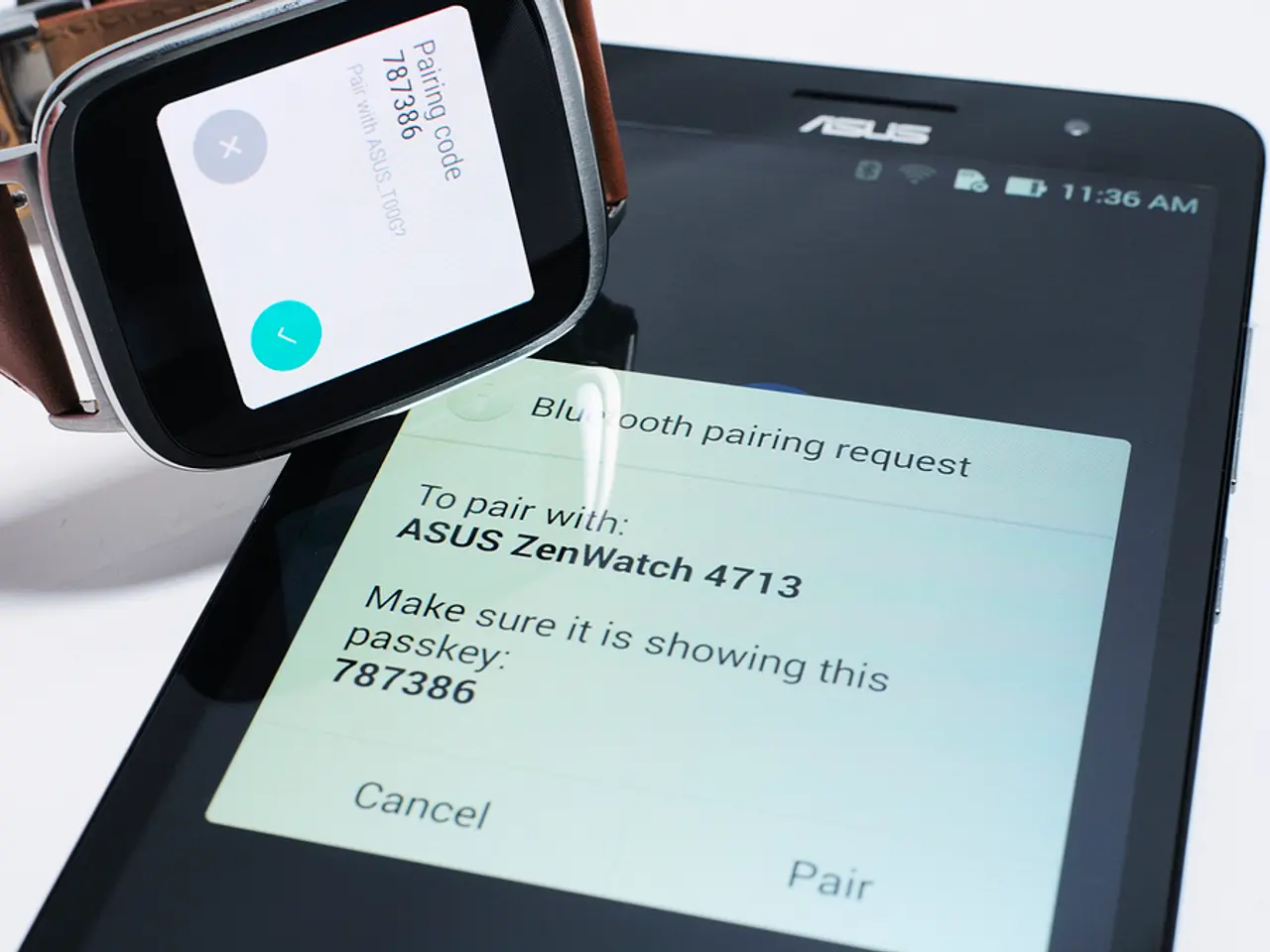Upcoming Smartwatch Tech Advancements to Look Forward to in 2025
In the world of smartwatches, 2025 has been a year of significant advancements. FDA-cleared diagnostic capabilities, AI-driven gesture controls, and enhanced cross-platform compatibility are just some of the major innovations gracing our wrists this year.
One such innovation is the Huawei Watch D2, the first consumer smartwatch to offer built-in 24-hour ambulatory blood pressure monitoring. Backed by over 200 patents, the Watch D2 boasts innovations in strap-based pressure sensing and tissue-adjusted calibration. To further enhance health monitoring, it incorporates a miniaturized airbag and pump integrated into the strap, along with Huawei's TruSense and high-precision optical sensors to monitor blood pressure.
Another notable development is the Apple Watch Series 10, which became the first in the lineup with FDA-cleared sleep apnea detection. Utilizing an AI model to analyze breathing irregularities during sleep, this feature is a testament to the growing role of smartwatches in health diagnostics.
While Apple continues to advance health sensors, it is companies like Meta that are pushing the boundaries of AI-powered gesture controls. The Meta smartwatch features a camera-based system that detects finger motions to navigate the interface, a breakthrough enabled by integrating their LLaMA-4 AI model and computational photography tailored to wrist-level imaging.
Cross-platform compatibility has also seen significant improvements. Huawei watches now fully support iOS devices through dedicated apps and robust Android integration, though some advanced features remain HarmonyOS-exclusive. Meta integrates its smartwatch closely with its AI glasses ecosystem, facilitating effortless data transfer, representing a move towards seamless multi-device interaction. Apple, on the other hand, continues enhancing connectivity with widespread 5G and satellite features for better reliability across networks, but remains focused on optimizing within its proprietary ecosystem.
Samsung's Exynos W1000, launched in mid-2024, powers the Galaxy Watch 7 series and is the first smartwatch chip built on a 3nm process. The Exynos W1000 offers 2.7× quicker app launches, better power efficiency, and a smaller size, making it perfect for wearables. Its big.LITTLE CPU and Mali-G68 GPU, combined with its FOPLP and embedded PoP packaging, result in 3.4× faster single-core and 3.7× multi-core performance.
Lastly, the CSF-3 Medical Watch from CardiacSense delivers continuous, motion-corrected ECG and PPG readings from the wrist. This watch tracks core vitals like respiration rate, oxygen saturation, cuffless blood pressure, and skin temperature, making it a valuable tool for health monitoring. The PulseSpeed algorithm, developed by Switzerland's CSEM in 2025, allows smartwatches to track heart rate, activity, and distance accurately without relying on GPS, using a patented method that fuses PPG and motion data for precise tracking.
With these advancements, 2025 marks a year where smartwatch innovation tightly converges on medically validated health diagnostics cleared or pending FDA approval, sophisticated AI-enabled gesture controls that expand interaction paradigms, and markedly better cross-platform device compatibility—though some ecosystem lock-in still exists depending on the brand.
- In the realm of smartwatches, the Huawei Watch D2, backed by over 200 patents, introduces innovations in strain-based pressure sensing and tissue-adjusted calibration for 24-hour ambulatory blood pressure monitoring.
- The Apple Watch Series 10, the first in the lineup with FDA-cleared sleep apnea detection, uses an AI model to analyze breathing irregularities during sleep, showcasing the growing role of smartwatches in health diagnostics.
- Meta is pushing the boundaries of AI-powered gesture controls, with their smartwatch featuring a camera-based system that detects finger motions to navigate the interface, enabled by their LLaMA-4 AI model and computational photography tailored to wrist-level imaging.
- Huawei watches, with dedicated apps and robust Android integration, now fully support iOS devices, despite some advanced features remaining HarmonyOS-exclusive.
- Meta integrates its smartwatch closely with its AI glasses ecosystem, facilitating effortless data transfer, representing a move towards seamless multi-device interaction.
- Samsung's Exynos W1000, launched in mid-2024, powers the Galaxy Watch 7 series and boasts a 3nm process, offering 2.7× quicker app launches, better power efficiency, and a smaller size.
- The CSF-3 Medical Watch from CardiacSense delivers continuous, motion-corrected ECG and PPG readings from the wrist, tracking core vitals like respiration rate, oxygen saturation, cuffless blood pressure, and skin temperature, making it a valuable tool for health monitoring.
- The PulseSpeed algorithm, developed by Switzerland's CSEM in 2025, allows smartwatches to track heart rate, activity, and distance accurately without relying on GPS, using a patented method that fuses PPG and motion data for precise tracking.
- In 2025, smartwatch innovation tightly converges on medically validated health diagnostics cleared or pending FDA approval, sophisticated AI-enabled gesture controls that expand interaction paradigms, and markedly better cross-platform device compatibility—though some ecosystem lock-in still exists depending on the brand.




